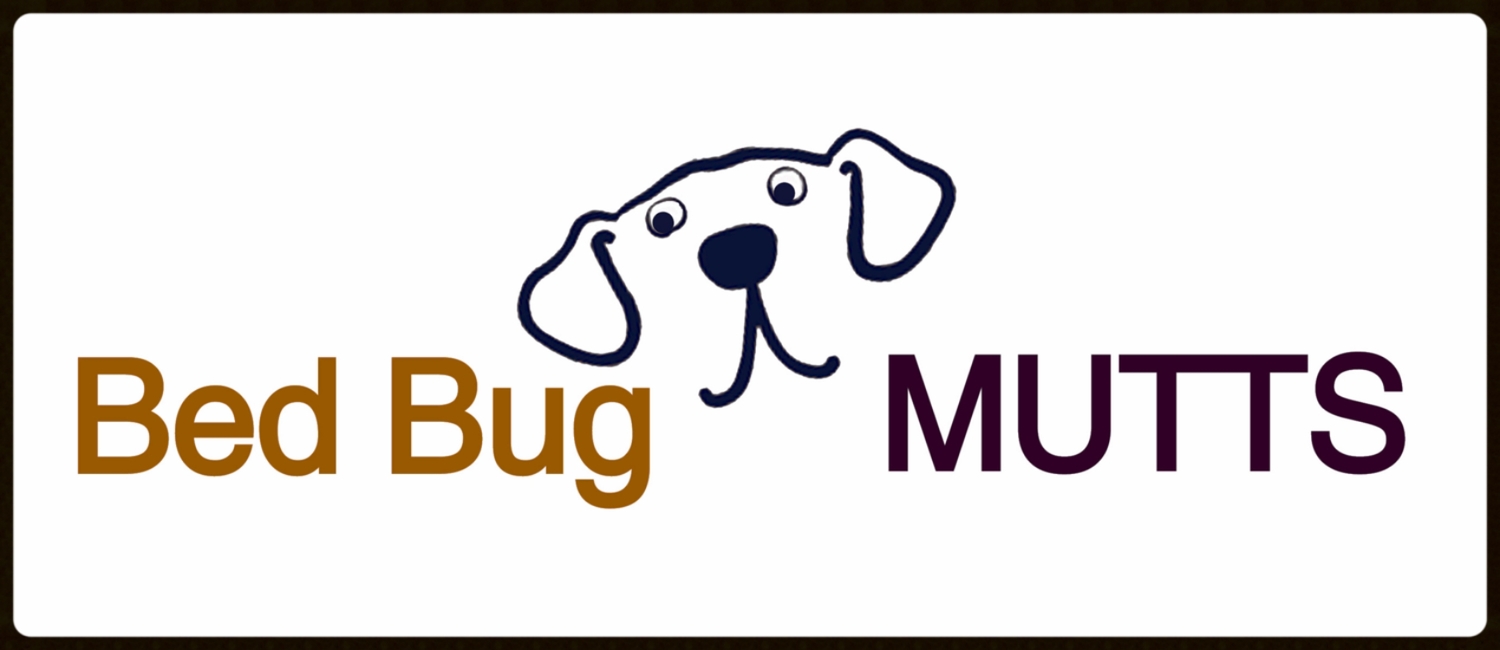How Do Bed Bug Dogs Work?
Science of Scent Detection
A scent detection dog 'looks' with his nose and 'reads' the scent picture. Essentially, the sniffer dog locates bed bugs by following their nose.
For example, you are able to identify the fragrance of a freshly baked apple pie; while a dog is able to identify each ingredient within the pie: eggs, lard, apples, sugar, lemon, butter, flour, water and cinnamon.
Canine Inspection Preparation
Before your bed bug dog inspection, please resist the urge to ‘tidy up’. This is your chance to forego the vacuuming and sweeping and please do not change the bed linens. Such housekeeping actions could chase bed bugs, should they be present, deeper into hiding.
Please ensure all fans are turned off and all windows and doors remain closed for an hour or more prior to Bed Bug Mutts arrival for the scheduled appointment. ‘Fans’ include: air conditioners, forced air heating, ventilation fans, kitchen, stove and bathroom fans, plus computer fans, including lap tops. This gives sufficient time for the target scent to accumulate undisturbed, should bed bugs be present.
Canine Inspection Procedures
We will arrive for our scheduled appointment and conduct a site survey of the area to be inspected.
- We are looking for any distractions that may interfere or harm the dog, e.g. dangling wires, household cleaners, toxic chemicals, pest control products, precarious furnishings, etc. and we are scouting out the best route for the inspection.
- We are also checking the natural air currents where scent could be disturbed, e.g., bathroom vents, chimneys, windows, doors, etc.
- This is also a good time for us to answer your questions.
Next, we will bring the sniffer dog in and begin the inspection.
- If you wish to be present during the search we ask there is no talking, touching or eye contact with the dog and little movement. Please control your reactions to the dog’s search – this is a perfect time to practice your poker face. We do not want to distract the handler or the dog during the inspection.
- We may limit the number of people that may be present during the search to reduce distractions that may affect the dog’s concentration.
- Often the inspection is done off-leash allowing the dog to ‘follow her nose”. Sometimes she will scout the perimeter of the room and work in, other times she will run a ‘zigzag’ pattern. She is looking for her target scent and if detected she will work the boundaries of the scent cone down to the source at which point she alerts
- During this process, some dishevelment results, e.g. cushions are removed, bed linens stripped layer-by-layer and some furniture may be moved. These actions ensure the dog has every possible chance to detect bed bugs as fabric diffuses scent.
If an alert occurs, we will do an initial check for signs of bed bugs; this is the 'show me the bed bug' protocol.
- Should live bed bugs or viable eggs be discovered the dog is rewarded with her favourite play toy. This is what drives her relentless energy for the hunt and fuels her determination. The area is then marked and the search resumed.
- If no immediate evidence of live bed bugs and viable eggs are uncovered, the area is marked for an in-depth examination later and the search is resumed
After a thorough inspection of the entire target area the dog will be taken off the premises to rest.
We will return to verify any alert through physical examination of the alert areas by visual inspection, e.g. examining furniture, removing switch plate covers, etc. as we search for live bed bugs, eggs, fecal stains and/or cast skins - "show me the bug".
After the entire area has been searched, we will provide a short verbal review of the inspection and answer your questions.
A written summary report will be emailed within 24 hours.



